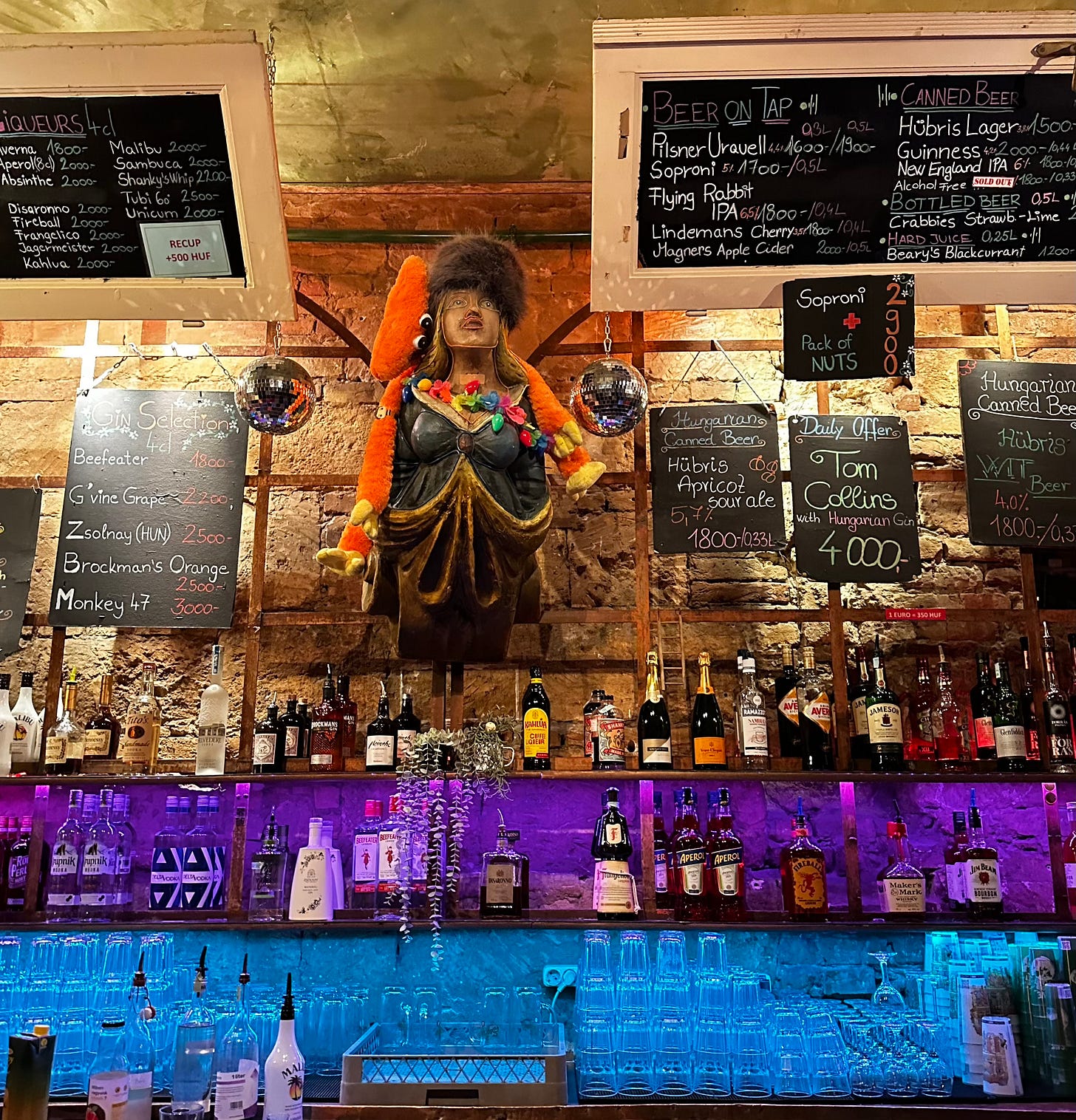You will find the ruin bars of Budapest in corridors along the city’s streets, opening like neon gashes in the alley walls. The storefronts part and cave in to reveal them, the way spacetime is supposed to sweep inward at the pull of a black hole. Ruin bars are gravity wells, alright, drawing pedestrians off their late-night paths—but light does escape from them. It’s crazy yellow and hot pink, florescent and ultraviolet, washing over wooden figureheads that smirk in a Mardi Gras sort of mood, a seedy invitation to the wayward: come on in.
Which you must do. Because the ruin bars have something important to say, though they will say it gradually, over cocktails made with slick Hungarian gin. One thing I learned this week on my trip to Budapest is that this is a city that has seen things. It harbors no illusions, because any illusions that might have survived the Romans would have been pierced through by the arrows of the Huns, and any last stragglers among them would have bled out under the invading foot of the Ottoman Turks. What wisdom you will learn here is hard-won.
Hungary spent the last century pincered between the Soviets and the Nazis, nursing some of the worst wounds that industrial modernity had to inflict. The dimpled concrete slabs of the ruin bars, and the jagged seams in their floors, are the sorts of scars that are left in stone by that spirit with no love for the souls of men.
And yet. At the turn of the 2000s a new spirit started moving among the empty lots and the cratered warehouses, a carnival spirit of benevolent devilry that draped strings of colored lights from the ceiling and transformed Soviet brutalism into Soviet kitsch.
And this is why I love the ruin bars more than even the magnificent Parliament Building, more than the sweep of the dark green hills by the river—more, even, than the neo-classical façades that have been draped artfully over old architectural monstrosities. Because a ruin bar isn’t covering the bitter past from view. It isn’t trying to forget the devastation wrought by misbegotten Communist dreams or the violence done to the eye by self-congratulating philistines. It’s pulling off something far more mischievous and bold. In ruin bars, the heartless machinery of the 1900s is dealt the greatest insult imaginable: its corpse is splayed out in public and trampled upon by the sneakers of tipsy hipsters in a dive bar.
If the West wants to recover its ancient spirit, it will have to bring back the elegance and pomp that was deflated by last century’s crass materialism. It will have to revive what was best in the past—what was eternal, and therefore not really past at all. But no movement into the future will be completely alive if all it has to offer is retreads of bygone aesthetics and the empty formalism of once-living art. Renaissance means rebirth today, with all the new materials and information we find at our disposal. It doesn’t mean acting like nothing has changed since the lost golden age. It means classical façades and ruin bars. It means gathering the ashes of decline into the shape of something new. What emerges will be solemn but not stiff, ancient yet alive, and breathing with the whisper of a rumor: even ruins can be dance floors. I’ll drink to that.
Rejoice evermore,
Spencer




